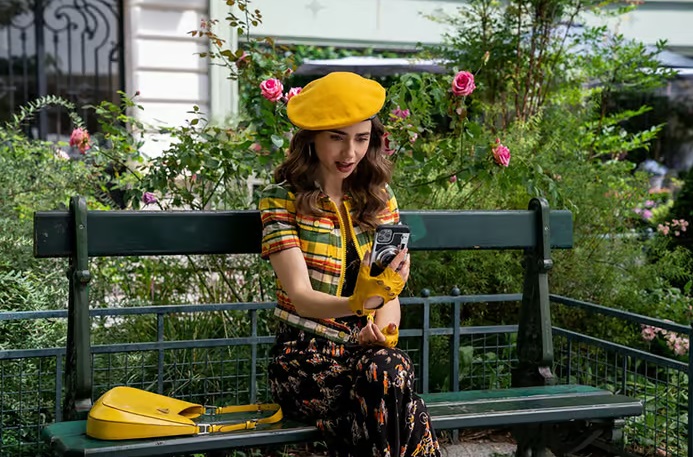Netflix’s beloved series Emily in Paris is breaking new ground in brand integration, signaling a potential shift in how luxury marketing is executed in the world of television. The first four episodes of the show’s fourth season, which have already captivated more than 58 million households globally, deliver a masterclass in weaving brand partnerships seamlessly into narrative storytelling, creating a blueprint for the future of content-driven marketing.
This season’s innovative take on brand integration arrives at a pivotal moment when traditional advertising methods are increasingly losing their impact. According to a 2023 Nielsen report, 86% of viewers now skip television ads, while 47% actively use ad blockers online. In response, luxury brands are exploring new strategies to connect with discerning audiences, and Emily in Paris appears to have struck a chord with its sophisticated and immersive approach.
One standout example is the organic integration of Boucheron, the prestigious French jeweler established in 1858. The brand is not merely showcased as a product placement but is intricately tied into a key storyline. Boucheron’s social media account is even featured within the narrative, a move that could significantly bolster its digital following, currently hovering at 877,000 on Instagram. Industry experts see this as a brilliant blend of content and commerce.
Likewise, the series highlights Ami Paris, the contemporary French fashion brand experiencing a 30% annual growth rate since 2020. Ami makes a strategic appearance at a fictionalized French Open event, cleverly aligning with the brand’s actual ventures into sports collaborations, such as its recent partnership with Puma. This synergy between the storyline and real-world brand activities showcases the show’s meticulous attention to relevance and trendsetting.
Pushing the Boundaries of Product Placement
Perhaps the most intriguing instance of brand storytelling in this season is the introduction of Baccarat, the iconic luxury crystal house. The show features a fictional perfume called “Heartbreak,” which blurs the line between fantasy and reality as it is available for purchase on Baccarat’s website for €410. This example of transmedia marketing highlights a new frontier where brand narratives are integrated into multiple touchpoints, offering consumers an immersive experience that bridges content and commerce.
The series also taps into the burgeoning luxury resale market, projected to reach $51 billion globally by 2026 according to Boston Consulting Group. A particularly memorable scene showcases Vestiaire Collective, the French luxury resale platform valued at $1.7 billion as of 2022. Although the pricing of a haute couture dress sold by Mindy in the series may be exaggerated for dramatic effect, the storyline reflects the growing trend of second-hand luxury as a desirable, sustainable option.
While Emily in Paris takes certain creative liberties with industry realities, its groundbreaking approach to brand integration offers a forward-looking vision for the future of luxury marketing within streaming content. As traditional advertising continues to wane in influence, this model of narrative-driven brand storytelling could become the go-to strategy for engaging the coveted millennial and Gen Z luxury consumers, who are expected to make up 70% of the luxury market by 2025.
In this evolving landscape, the success of Emily in Paris in intertwining brand stories with engaging content may set a new standard for how streaming platforms and luxury brands collaborate in the digital age.



